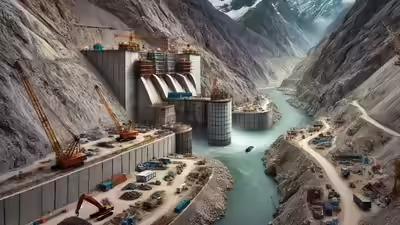The Strategic Dam Projects on the Siang River
Tractors laden with drilling equipment made their way up a muddy hillside in Begging village, Arunachal Pradesh, marking the beginning of a pre-feasibility study for a massive dam across the Siang River. This river, known as the Brahmaputra in Assam and Yarlung Zangbo in China, is at the heart of a growing geopolitical and environmental controversy.

Local Resistance and Environmental Concerns
The local Adi community's protests against the dam have intensified, with villagers damaging drilling machines and cutting off access to the survey site. The project, part of India's strategic response to China's dam construction upstream, faces significant opposition due to potential environmental and social impacts.
China's Mega Dam Initiative
China has commenced construction on what is expected to be the world's largest dam on the Brahmaputra River, a move that has raised alarms in India. The project, dubbed the 'project of the century,' signals Beijing's strategic intentions in the region, with potential implications for water flow downstream.
India's Countermove: The SUMP Project
India's proposed Siang Upper Multipurpose Project (SUMP) aims to establish a strategic foothold on the Siang River. However, the project's progress is hampered by local resistance and concerns over its environmental and cultural impact.
Ecological and Geopolitical Stakes
The construction of mega dams by both China and India in the seismically active and ecologically fragile Eastern Himalayas poses significant risks to the region's biodiversity and the livelihoods of local communities. The situation underscores the delicate balance between strategic interests and environmental sustainability.









Comments